Types of Braces
If you are considering getting braces, then you have come to the right place. At Otto Orthodontics, we understand that choosing the right type of braces is an important decision regarding your treatment. That’s why we offer a variety of different types of braces to cater to your individual needs and preferences. Our team of orthodontic specialists is highly trained and experienced in all types of braces, ensuring that you receive the best care possible.
Traditional Metal
Traditional metal braces have been around for a long time and are still one of the most commonly used types of braces. They consist of metal brackets that are attached to each tooth with an archwire running through them. The tension from the archwire gradually moves your teeth into the desired position. These braces are highly effective and can treat a wide range of orthodontic issues, making them a popular choice for patients of all ages.
Damon Self-Ligating Brackets
Damon self-ligating brackets are a more modern version of traditional metal braces. They have smaller brackets and use a slide mechanism to hold the archwire in place, eliminating the need for elastic ties or metal ties. This not only makes them less noticeable but also reduces friction and discomfort. As a result, treatment time is often shorter and requires fewer adjustments.
Ceramic (Clear) Self-Ligating Brackets
Ceramic self-ligating brackets function the same way as traditional Damon braces, but they use tooth-colored brackets instead of metal. This makes them a more aesthetically pleasing option for those who are conscious about the appearance of their braces.
In addition to their superior aesthetics, ceramic self-ligating braces offer several distinct advantages. Their material composition reduces the visual impact, allowing for a subtler look that matches the natural color of your teeth, making them far less noticeable than their metal counterparts. Furthermore, the self-ligating design means the braces do not require elastic or metal ties, which often stain and require constant changing. As a result, ceramic braces can be an ideal solution for those seeking an effective yet discreet orthodontic solution
Champagne
These innovative brackets are a game-changer in orthodontic treatments. As the name implies, these braces feature a unique champagne or rose gold color, which offers an aesthetically pleasing and more subtle alternative to traditional metal braces. Not only do they offer all the benefits of braces, but their distinctive color also blends beautifully with your natural smile, making them less noticeable. These braces are made from a high-tech material, ensuring both comfort and durability throughout the treatment. If you’re looking for an orthodontic solution that harmonizes effectiveness and style, champagne braces could be the ideal choice for you.
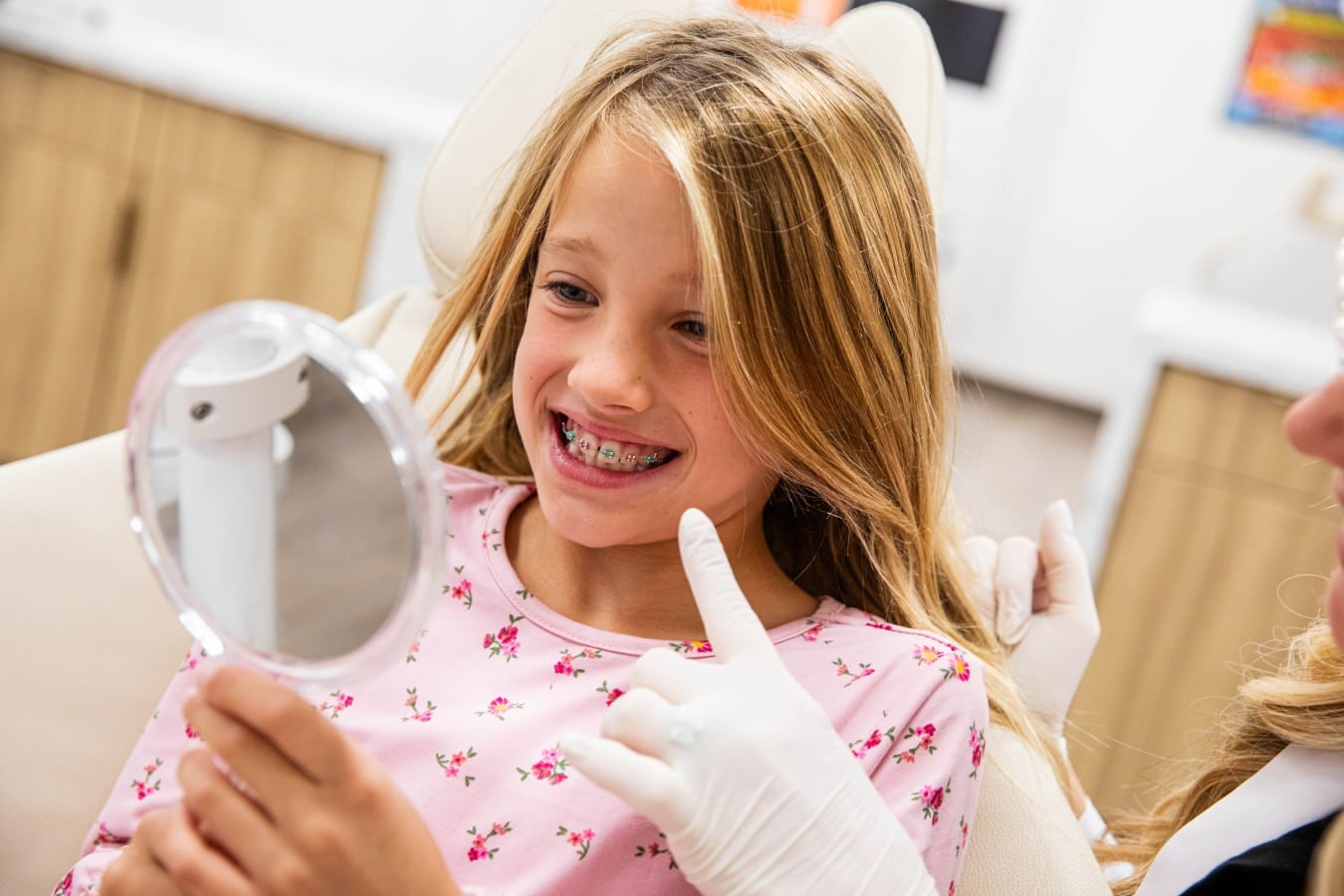
Braces For Kids
While there is no exact age for children to begin orthodontic treatment, the American Association of Orthodontists recommends visiting an orthodontist around age 7. By this age, most children have a mix of baby teeth and adult teeth, making it easier for the orthodontist to diagnose and correct tooth and jaw problems sooner and without surgery.
Early treatment allows your orthodontist to:
- Correct and guide the growth of your child’s jaw to help the permanent teeth come in straight
- Regulate the width of the upper and lower arches
- Create more space for crowded teeth
- Avoid the need for permanent tooth extractions later in life
- Correct thumb sucking and help improve minor speech problems
For parents, it’s not always easy to know if your child may need orthodontic treatment. Here are a few things to look for that may mean your child needs to see an orthodontist:
- Early or late loss of baby teeth
- A hard time chewing or biting food
- Mouth breathing
- Finger or thumb sucking
- Crowded, misplaced, or blocked teeth
- Jaws that pop or make sounds when opening and closing
- Teeth that come together abnormally, or do not come together at all
- Jaws and teeth that are not proportionate to the rest of the face
- Crowded front teeth around age seven or eight
Have you observed any of the issues mentioned above in your child? If yes, it may be time to consider braces. Braces aren’t just about improving your child’s smile. They also correct poor dental habits, irregular bites, and jaw disorders.
Remember, early detection and treatment by a professional orthodontist can save you and your child a lot of time, money, and discomfort down the line. Our expert team is here to guide you and provide the best care for your child’s orthodontic needs. Contact us today to request a consultation!
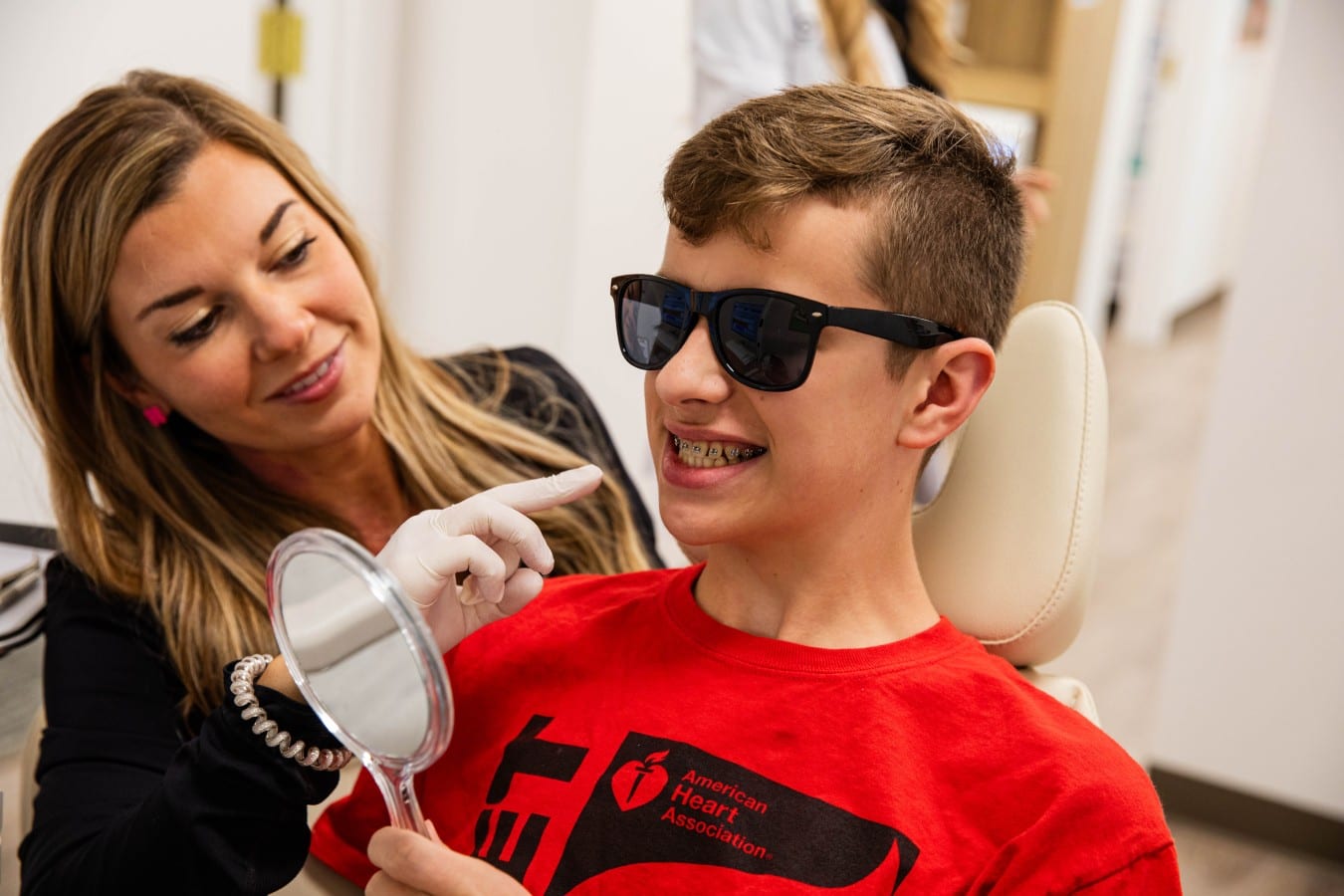
Braces For Teens
Are you a teenager who has been told by your dentist that you need braces? If so, don’t worry! You’re not alone. Millions of teens around the world get braces every year to achieve a beautiful and healthy smile.
While getting braces may seem intimidating at first, it’s actually an excellent time to do so. In this guide, we’ll discuss why the teen years are an ideal time to get braces, what life with braces looks like, and tips for caring for your braces.
The teenage years are a crucial time for orthodontic treatment. This is because, during this stage of development, your body is still growing and changing rapidly, which makes it easier for orthodontists to guide teeth into their correct positions.
Furthermore, most teens have all of their permanent teeth by the time they reach adolescence. This means that any issues with tooth alignment can be addressed and corrected more effectively with braces.
Another reason why getting braces during your teen years is beneficial is because many of your peers will also be going through the same experience. This can make wearing braces feel more normal and less stigmatized.
Life With Braces: What To Expect
Wearing braces may take some getting used to, but the results are well worth it in the end. During your treatment, you can expect to visit your orthodontist every 4-8 weeks for adjustments and check-ups.
It’s also important to keep your teeth and braces clean to avoid any potential issues. This means brushing after every meal, flossing daily, and using special tools such as interdental brushes or water flossers recommended by your orthodontist.
In terms of diet, there are some foods that you may need to avoid while wearing braces, such as sticky or hard foods that can damage your brackets or wires. However, there are still plenty of delicious and healthy options available to enjoy.
If you’re worried about having to give up your favorite sports or activities while wearing braces, don’t be! With proper care and precautions, you can continue participating in all of the activities you love.
For contact sports, you will absolutely need to wear a mouthguard to protect both your teeth and braces. For non-contact sports or activities, you can simply wear a protective lip guard to prevent discomfort. It’s also important to communicate with your coach or instructor about wearing braces so they can provide additional guidance and support if needed.
There’s no need to be nervous about getting braces during your teenage years. In fact, it’s actually an ideal time to do so for optimal results. Remember to take good care of your braces and follow your orthodontist’s instructions, and before you know it, you’ll have a beautiful and healthy smile that you can be proud of. So, embrace the journey towards straighter teeth and don’t forget to smile!
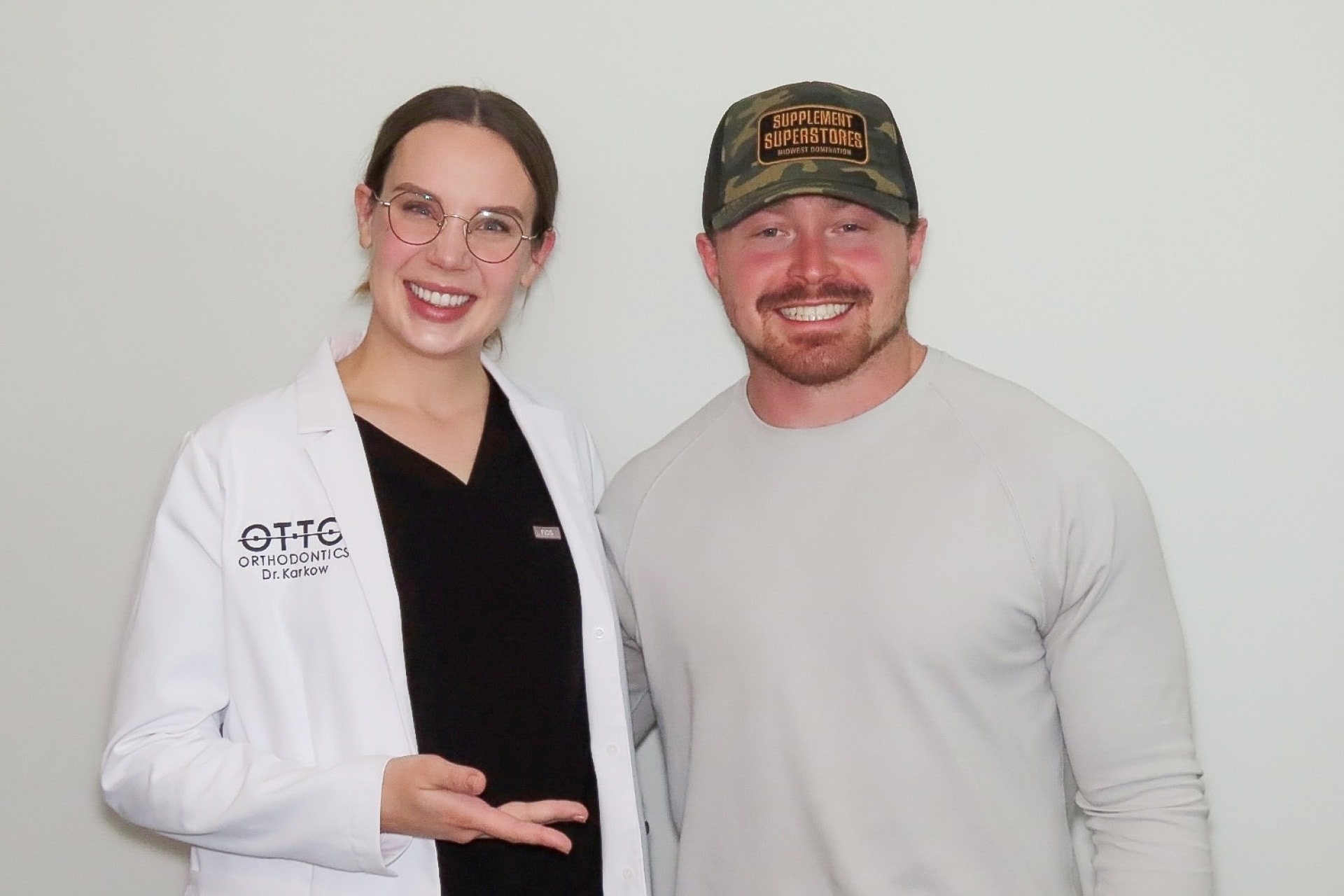
Braces For Adults
Orthodontic treatment is no longer just for teens. In fact, the American Association of Orthodontists states that one in five orthodontic patients is over the age of 21. Many adults are choosing to receive treatment because they understand the importance of maintaining their health, and they want to feel better about their appearance. Adults everywhere are taking advantage of the opportunity to receive orthodontic care, and now you can too.
Here are some common reasons why many adults consider orthodontic treatment:
- A bad bite or malocclusion, causing teeth to fit together incorrectly
- Teeth are crowded or spaced apart, possibly causing tooth decay or gum disease
- Abnormal jaw pain, or pressure that is caused by crooked teeth
- Desire for a healthier mouth and a more confident smile
The difference between adult orthodontics vs. orthodontics for children & teens
The main difference to remember when treating adults compared to children and teens is that in younger patients the jawbones are still developing. For adults, these bones have stopped growing, which may mean the possibility of orthognathic surgery to align the jawbones. Other differences include:
- Gum Or Bone Loss (Periodontal Disease) — Adults are more likely than children to experience gum recession or even bone loss due to gingivitis or advanced periodontal disease. Patients with straighter teeth are less likely to get gum disease.
- Worn Or Missing Teeth — Over time teeth can become worn down and shift into different positions that can only be corrected with orthodontic care. Missing teeth can cause other teeth to shift and tilt, creating a bad bite and increasing the possibility of gum disease.
- Incomplete Treatment As A Teen — Many adults received some orthodontic treatment as a child or teen, but never completed their treatment. As an adult, they choose to complete their orthodontic treatment to achieve the healthy, beautiful smile they always wanted.
Our practice also recognizes that adults and children have different needs, and require a different level of attention and care. We will work with you to ensure that you receive the most appropriate treatments and that your needs are met with understanding and respect from us.
For many adults, the thought of having metal braces is enough to discourage them from receiving treatment. However, today’s orthodontic treatment options offer a variety of braces and appliances that are comfortable, aesthetic, and customized to meet your needs.
Why should you consider orthodontic treatment?
- Straight Teeth Are Healthy Teeth — Teeth that are properly aligned are easier to keep clean with flossing and brushing, and may help prevent other health problems.
- A Beautiful Straight Smile Builds Confidence — Orthodontic treatment can help boost your self-confidence, giving you a better quality of life and the freedom to smile without holding back!
- Mouths Left Untreated Can Get Worse — Not receiving orthodontic treatment when it’s needed can create long-term health issues costing you more in the end.
To learn more about the benefits of adult orthodontics please contact our practice to request a consultation. We understand that you have a busy schedule, and we will work with you to make sure each office visit is as convenient as possible
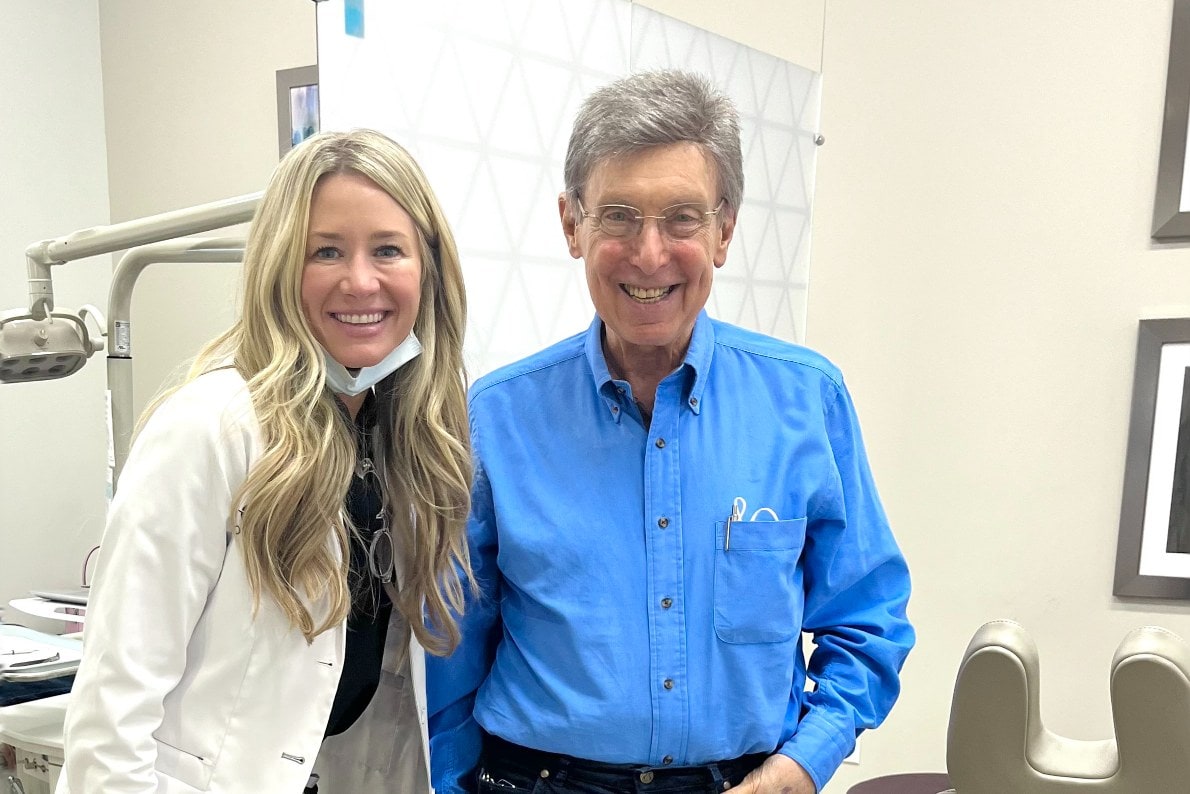
Braces For Senior Adults
Why Get Braces As A Senior Adult?
Senior adult orthodontics can help you achieve the smile you’ve always desired and address any dental health concerns that have developed over time. Additionally, it can prevent the occurrence of new orthodontic issues.
It’s worth noting that the senior years can be an ideal time to prioritize your oral health and achieve a healthy smile with orthodontics at Otto Orthodontics. During this chapter of life, you may have the resources and freedom to focus on yourself and obtain the smile you deserve. With retirement years being longer and more active nowadays, many older adults engage in new hobbies, exciting adventures, and choose healthy lifestyles. Adult braces or Invisalign can serve as a wonderful aesthetic enhancement for this vibrant phase, enhancing your sense of youthfulness, confidence, and attractiveness.
Furthermore, adult orthodontics can significantly improve your quality of life. Some seniors may experience difficulties in eating, speaking, or drinking due to dental issues, which can be alleviated through Invisalign or braces treatment. If you’re suffering from jaw pain, migraines, or TMJ related to orthodontic problems, regaining a pain-free life is possible with our specialized treatment.
Correcting misaligned teeth or addressing a bad bite not only benefits your oral health but also impacts your overall physical well-being. Straight teeth are easier to clean, reducing the risk of tooth decay, cavities, and gum disease. Maintaining good oral health is crucial as certain studies have even linked poor oral health with serious conditions such as heart disease and diabetes.
Some of the benefits of straight teeth include:
- Enhanced Chewing Efficiency — If you’ve been struggling with chewing as you’ve gotten older, it could be due to misaligned teeth. Aligning your bite can restore proper dental function, allowing you to enjoy your meals without frustration.
- Improved Oral Hygiene — Crooked teeth pose a challenge when it comes to maintaining oral hygiene. Proper brushing and flossing become more time-consuming. Neglecting oral care increases the risk of tooth decay, cavities, gum disease, and even tooth loss.
- Preserving Tooth Health — As we age, our bites tend to deepen, leading to tooth wear. Enamel does not regenerate, which may necessitate procedures such as veneers or crowns to restore both the length and functionality of your teeth.
- Preventing Future Problems — Minor dental issues in adulthood can worsen over time. By addressing these concerns with adult orthodontics, you can prevent more complex problems in your senior years.
How to Get Started
If you’re considering getting braces as a senior adult, the first step is to request a consultation with our team at Otto Orthodontics. During this visit, we will evaluate your oral health and discuss your treatment options, including timeline and cost.
We understand that getting braces as a senior adult may seem like a new and unique experience, but rest assured, our team will guide you every step of the way. We strive to make the process as comfortable and efficient as possible, so you can enjoy all the benefits of a straighter smile!
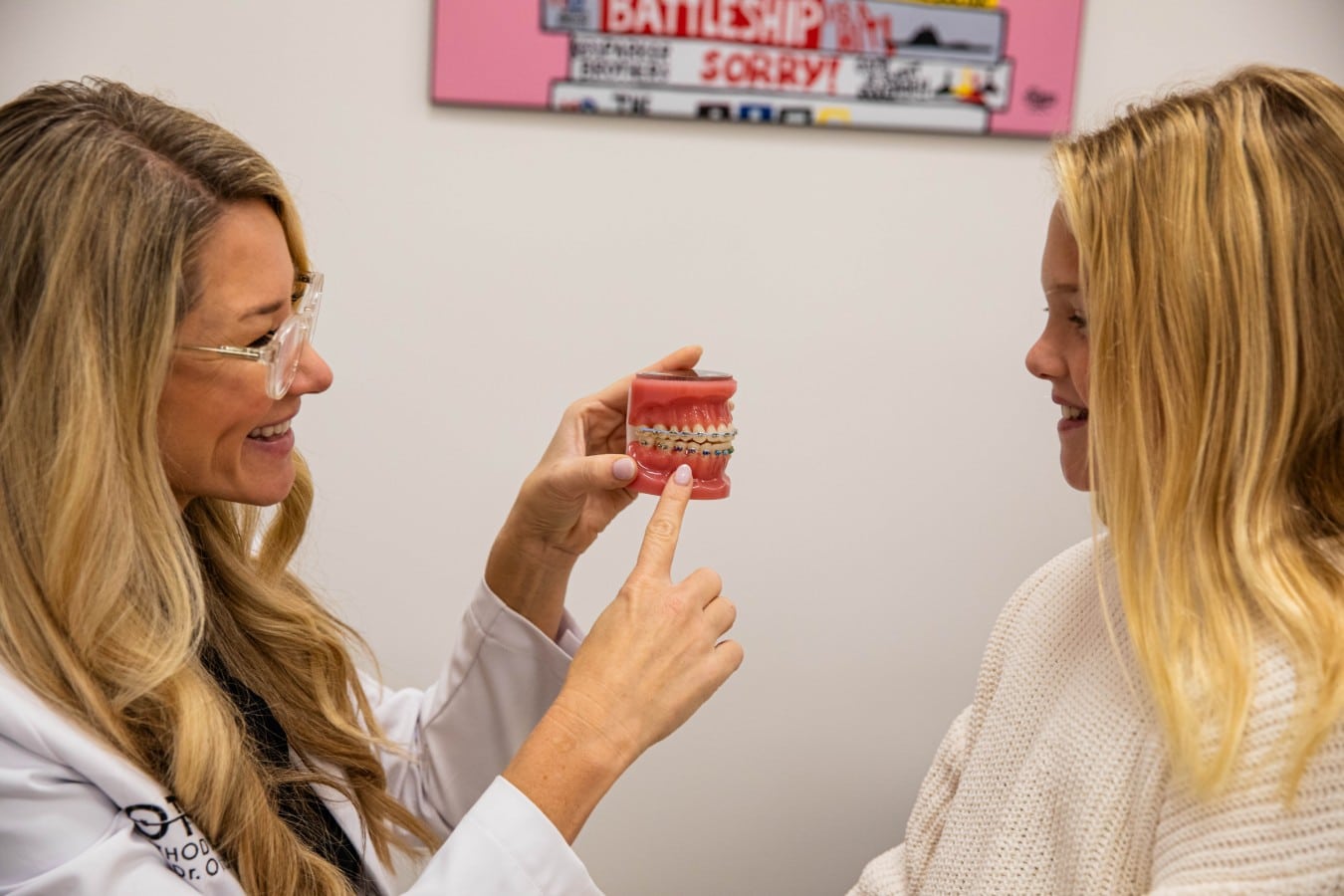
Braces Care
Braces are a great way to improve your smile and your dental health. Once you start wearing braces, you will want to take good care of them in order to keep them looking their best. Braces need to be kept clean and polished at all times in order to maintain the appearance of your smile. By taking good care of them, you can help avoid dental problems like tooth decay and gum disease. Watch our instructional video on the best way to take care of your braces.
What is the best way to take care of your braces?
- Using Your Home Care Kit — The home care kit has all the tools you’ll need to take care of your braces. There’s a toothbrush, floss, floss, shredder, proxy brush wax, and a food list. Following the instructions and using the kit properly will ensure a healthy mouth and a happy smile.
- Brushing Your Teeth With Braces — Move your toothbrush in a circular motion and at three different angles on the top of the braces, bottom of the braces, and front of the braces. Spend at least 30 seconds in each spot. Then, brush along the gum line, starting with the top of the braces, and brush down with just enough pressure to get the tips of the bristles under the wire brush from one side to the other side. Next brush underneath the braces with just enough pressure to get the tips of the bristles under the wire to go from one side to the other side several times. Lastly, brush directly on top of the braces and wire, repeating the same motions. Remember to gently brush the gum line too. The gum line is where your teeth and gums meet. This will help ensure your gums do not get swollen during treatment. Don’t forget to brush your chewing surfaces and the very back of your teeth. We recommend brushing for at least 3 minutes to ensure all surfaces are clean. You’ll want to brush your teeth 3 to 4 times a day, or at least after every meal.
- Flossing With Braces — Pull 3 to 5 inches of floss through the loop at the end of the floss spreader, then thread the floss spreader under the wire and gently go between your teeth, hugging the sides of each tooth, then remove the floss and repeat between every tooth.
- How To Use A Proxy Brush — A proxy brush is used between the brackets and under the wire to loosen food particles, remove plaque, and stimulate the gums. To use it push the brush gently under the wire and between the brackets. If it’s hard to push the brush into an area, don’t force it because you could break a bracket, only use it in areas where you can apply gentle pressure.
- When And How To Use Wax — As you’re getting used to your braces, you may feel a small wire poking your cheek. If you do, use some orthodontic wax to cover that area. Pinch off a small piece of wax and soften it by rolling it between your fingertips. Then place the wax over the spot that is bothering you. Remember to remove the wax before eating or brushing. If you don’t and you actually swallow some, don’t worry, it is not harmful. If a brace is irritating your cheek place a small piece of wax on the offending bracket. If you’re feeling an achy sensation, you can take Motrin or Tylenol to relieve any discomfort. We prefer Tylenol over ibuprofen when possible. It is compared to when your muscles are sore after a hard workout, typically any discomfort goes away after 48 to 72 hours.
- What To Do When You Have An Accident — Accidents can and will happen. If at any time you break a bracket or a wire, don’t worry, it’s not an emergency. Just call the office on the next working day to let us know. We’ll let you know if it’s necessary to come in and have the brace fixed before your next scheduled appointment. It’s important that we know if a bracket is broken before your regularly scheduled appointment.
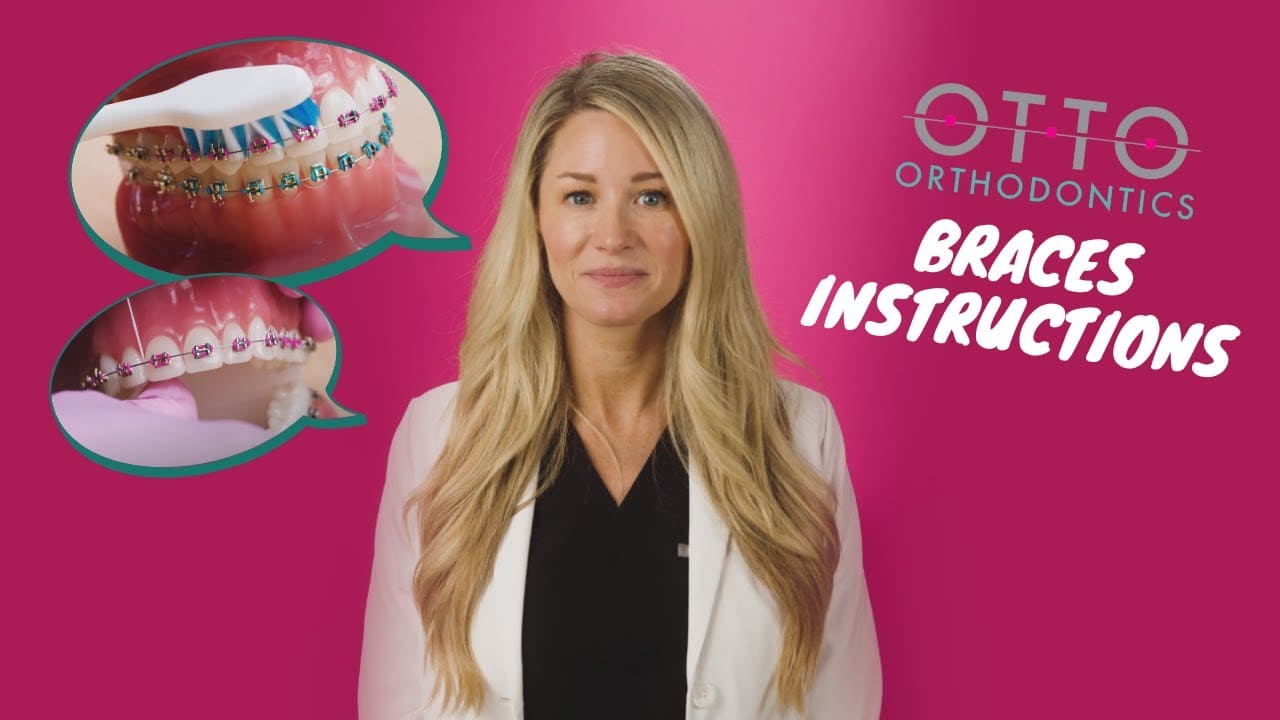
Life with Braces
You’ll find that life with braces will need to be a bit different from your normal routine. However, most patients adjust quickly and you’ll find that these small adjustments will make a major difference in not only your experience during treatment, but in how well your teeth look afterward!
